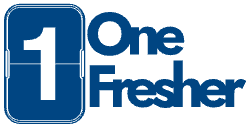Creating an impressive resume as a fresher can be challenging, but it’s a crucial step in launching your career. A well-crafted resume highlights your skills, education, and potential, making you stand out to employers. Here’s a comprehensive guide on how to build an impressive resume as a fresher.
1. Choose the Right Format
Selecting the appropriate resume format is essential. As a fresher, consider using a chronological or functional resume format:
- Chronological Format: Lists your experiences in reverse chronological order, starting with the most recent. This format is suitable if you have relevant internships, part-time jobs, or volunteer work.
- Functional Format: Focuses on your skills and qualifications rather than your work history. This format is ideal if you lack work experience but possess relevant skills.
2. Craft a Strong Objective Statement
Begin your resume with a compelling objective statement that clearly outlines your career goals and what you aim to achieve in the position you’re applying for. Make it concise and tailored to the specific job role. For example:
“Dedicated and results-driven Computer Science graduate seeking an entry-level software developer position to utilize my programming skills and contribute to innovative projects.”
3. Highlight Your Education
As a fresher, your education is a significant part of your resume. Include the following details:
- Degree and Major: Specify your degree and major (e.g., Bachelor of Science in Mechanical Engineering).
- Institution Name: Name the college or university you attended.
- Graduation Date: Mention your graduation date or expected graduation date.
- GPA: Include your GPA if it’s impressive (generally 3.5 or higher).
- Relevant Coursework: List any relevant courses or projects that showcase your skills and knowledge.
4. Emphasize Your Skills
Create a skills section that highlights both hard and soft skills relevant to the job you’re applying for. Use bullet points for clarity. Examples of skills include:
- Technical Skills: Programming languages, software proficiency, data analysis, etc.
- Soft Skills: Communication, teamwork, problem-solving, time management, etc.
5. Showcase Internships and Volunteer Work
If you have completed internships or volunteered, include these experiences in your resume. For each position, provide:
- Job Title: Specify your role.
- Organization Name: Name the company or organization.
- Duration: Include the start and end dates.
- Responsibilities and Achievements: Use bullet points to describe your key responsibilities and any notable achievements or contributions.
6. Include Relevant Projects
Highlight any projects you have worked on that are relevant to the job you’re applying for. Include the following details:
- Project Title: Name of the project.
- Description: Briefly describe the project and its objectives.
- Role: Specify your role in the project.
- Technologies Used: List the technologies or tools you used.
- Outcomes: Mention any measurable outcomes or successes of the project.
7. Add Certifications and Training
If you have any certifications or have completed relevant training programs, include them in a separate section. For each certification or training program, provide:
- Certification/Training Name: Name of the certification or program.
- Issuing Organization: Name of the institution that issued the certification.
- Date: Date of completion.
8. List Extracurricular Activities and Achievements
Include any extracurricular activities, leadership roles, or achievements that demonstrate your skills and qualities. Examples include:
- Leadership Roles: Captain of a sports team, president of a club, etc.
- Achievements: Awards, honors, competitions won, etc.
9. Use Action Verbs and Quantify Achievements
When describing your experiences, use strong action verbs like “developed,” “managed,” “designed,” and “implemented.” Quantify your achievements whenever possible to provide a clear picture of your contributions. For example:
- Implemented a new filing system that reduced document retrieval time by 30%.
- Developed a web application that increased user engagement by 25%.
10. Proofread and Edit
Finally, proofread your resume multiple times to eliminate any grammatical or spelling errors. Consider asking a mentor, professor, or friend to review it and provide feedback. A polished and error-free resume leaves a positive impression on potential employers.
By following these steps, you can create a strong and impressive resume that highlights your strengths and sets you on the path to securing your first job.
